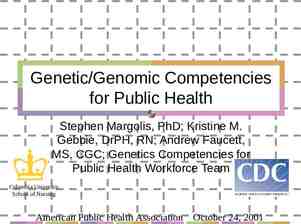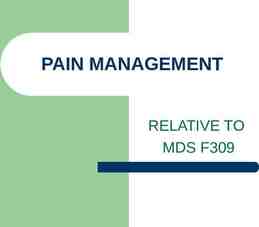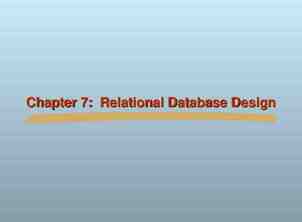EXERCISE PLANNING
13 Slides278.49 KB

EXERCISE PLANNING

WHY DO WE EXERCISE? Exercises help build preparedness for threats and hazards by providing a low-risk, cost- effective environment to: Test and validate plans, policies, procedures, and capabilities Identify resource capability gaps, areas for improvement, and potential best practices * Information from the National Exercise Program (NEP)

TYPES OF EXERCISES DISCUSSION-BASED EXERCISES OPERATIONS-BASED EXERCISES Focus on strategic, policy-oriented issues, and utilizes a facilitator(s) or presenter(s) to lead the discussion Include a real-time response such as initiating roles and responsibilities; and identify resource gaps Used to familiarize players with or to develop new plans, policies, procedures, or agreements Used to validate plans, policies, procedures, or agreements Facilitator Guide/EEG will be questions asked to gather participants responses MSEL/EEG will be action oriented injects to prompt a players response Examples: Examples: Seminar Drills Workshop (WS) Functional Exercise (FE) Tabletop (TTX) Full-Scale Exercise (FSE)

PROGRESSIVE EXERCISE PLANNING APPROACH Use a variety of exercises aligned to program priorities and objectives Increase the level of complexity over time Does not always imply a linear progression of exercise types *Information taken from FEMA HSEEP Course

BUILDING BLOCK APPROACH TO EXERCISE

PLANNING MEETING TIMELINE Concept & Objective Meeting (C&O) Conducted 5-7 months before the exercise Initial Planning Meeting (IPM) Conducted 5-7 months before the exercise Midterm Planning Meeting (MPM) Conducted 3 months before the exercise MSEL Meeting (Optional) Refer to the Exercise Planning Tab in the Excel Workbook for more information about what to accomplish with each phase of the planning cycle. Conducted 3 months before the exercise Final Planning Meeting (FPM) Conducted 4-6 weeks before the exercise or the exercise plan is due

EXERCISE PLANNING TEAM MEMBERS Members are chosen based on the core capabilities, type of exercise, and draft objectives of the exercise They should be subject matter experts for the area they represent on the planning team They are not required to know the exercise documents or how to complete them Planning team members can not be exercise participants (players) Can serve as a controller, evaluator, or SimCell during the exercise

EXERCISE TERMINOLOGY

ABBREVIATIONS & MEANINGS TTX – Tabletop FE – Functional Exercise FS – Full-Scale Exercise AAR – After-Action Report AAM – After-Action Meeting EEG – Exercise Evaluation Guide EndEx – End of Exercise

ABBREVIATIONS & MEANINGS CONTINUED SitMan – Situation Manual Ex Plan – Exercise Plan MSEL – Master Scenario Events List HSEEP – Homeland Security Exercise & Evaluation Program IPPW – Integrated Preparedness Planning Workshop IPP – Integrated Preparedness Plan

WHAT ARE EXERCISES BASED ON? Threat & Hazard Identification & Risk Assessment (THIRA) / Stakeholder Preparedness Review (SPR) CPG 201 Previously identified areas for improvement/corrective actions New/draft plan, policy, or procedure Integrated Preparedness Planning Workshop (IPPW) Results

EXCEL WORKBOOK REVIEW Review each tab in the Workbook and become familiar with the information presented in each tab.

EXERCISE RESOURCES ADEM Resources: Exercise Templates Exercise Trainings covering exercise development and improvement planning Exercise Section https://www.dps.arkansas.gov/emergency-management/adem/training-exercise/ exercise/exercise-resources/ FEMA Resources: HSEEP Preparedness Toolkit (Link on ADEM Exercise Page) Prep Toolkit https://preptoolkit.fema.gov/web/guest/user-guide/-/wiki/Main/Registration and Sign In






